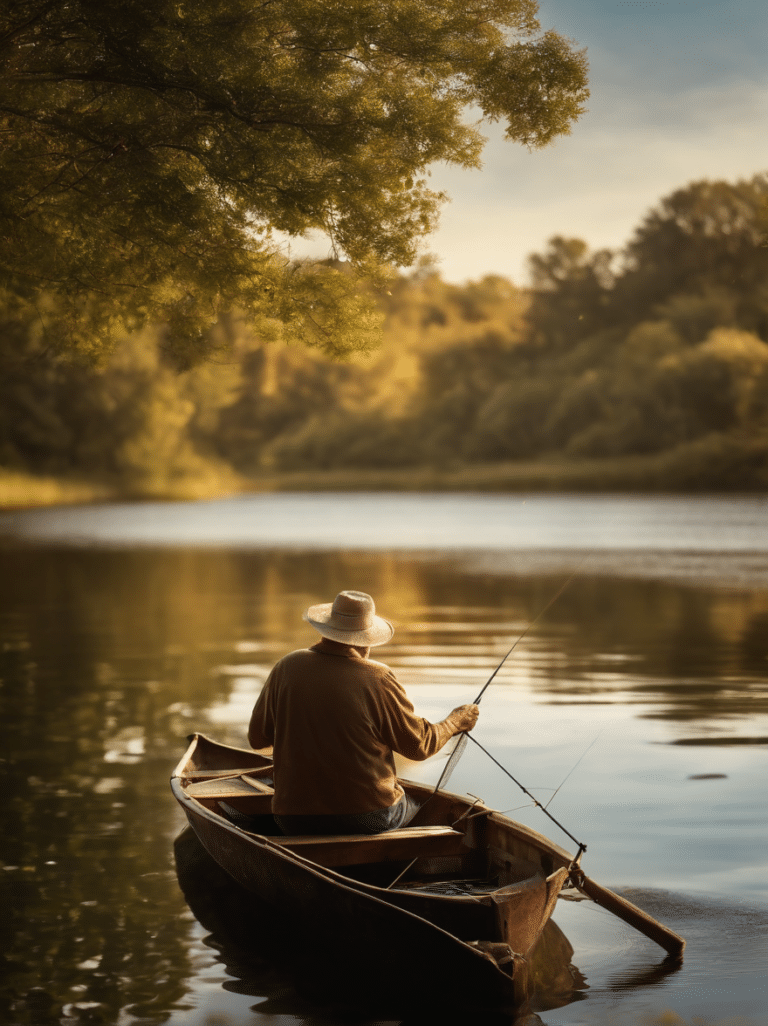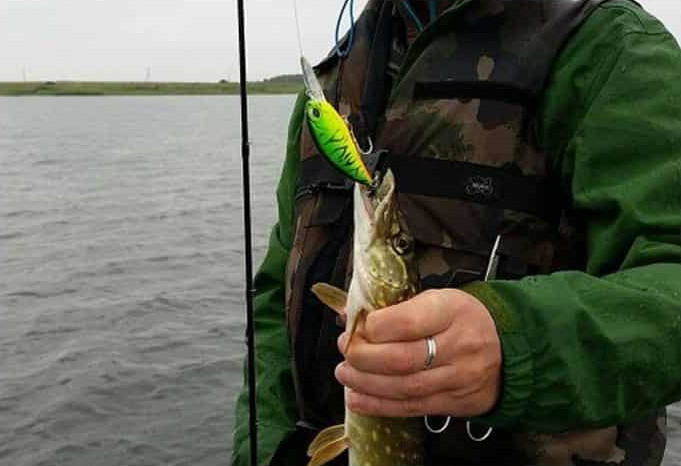Master the Waters: Your Ultimate Guide to Crankbait Fishing Success
Master the Waters: Your Ultimate Guide to Crankbait Fishing Success
Introduction
Welcome, fellow angler! Do you want to expand your fishing game and reel in more catches? Then, you’ve landed at the right spot! This comprehensive guide will take you through the ins and outs of crankbait fishing, one of the most versatile and effective angling methods. From beginners to seasoned pros, everyone will find a nugget of wisdom here to refine their approach to crankbait fishing. So, let’s dive in!
The What and Why of Crankbaits
What is a Crankbait?
Crankbaits, for the uninitiated, are a type of fishing lure designed to mimic the movement of small fish, the primary food source for many larger fish species. They come in various shapes, sizes, and colours, each serving a unique purpose and mimicking a different type of prey. The distinguishing feature of crankbaits? They dive underwater when retrieved, a feature that opens up a whole new world of fishing opportunities.
Why Choose Crankbaits?
So, why should crankbaits earn a spot in your tackle box? Well, their versatility and effectiveness are hard to beat. They allow you to cover water quickly, attract fish from a wider area, and target fish at different depths, making them perfect for all types of fishing environments. Plus, the wide variety of crankbaits available means you can adapt to almost any situation you might encounter on the water.
The Anatomy of a Crankbait
Body Types and Their Significance
Crankbaits come in various body types, including flat-sided, round-bodied, and square-billed, each designed to mimic different types of prey and create unique movements in the water. Flat-sided crankbaits, for instance, have a tight, vibrating action that works well in cold water. Round-bodied ones exhibit a wider wobble, attracting fish in warmer water. Understanding these differences can be key to successful crankbait fishing.
The Importance of Lip Shape
The lip or bill of a crankbait plays a significant role in determining how deep it will dive and how it will move underwater. Long, narrow lips help a crankbait dive deep and exhibit a tight wobble, while short, wide lips keep the bait shallow with a wide wobble. Knowing this helps you select the right crankbait for the fishing conditions.
Decoding Colours and Patterns
The colour and pattern of a crankbait can make a difference in how attractive it is to fish. Natural, muted colours tend to work well in clear water or on sunny days, while bright, vibrant colours can attract fish in murky water or on overcast days. Some crankbaits even come with patterns that mimic the markings of certain prey fish, adding another level of realism to the lure.
Considering the Fishing Environment
When selecting a crankbait, the environment you’ll be fishing in should be your primary consideration. The depth of the water, its clarity, the temperature, and the type of cover or structure present—all these factors can influence which crankbait will be the most effective. For instance, in deep, clear waters, a long-lipped, natural-coloured crankbait may be your best bet. Conversely, shallow, murky waters might call for a square-billed crankbait in a bright colour.
Factoring in the Fish Species
Different fish species respond differently to various types of crankbaits. Knowing what species you’re targeting can help you choose the right crankbait for the job. For instance, bass are known to respond well to wide-wobbling, square-billed crankbaits, while pike often prefers a tight-wobbling, deep-diving crankbait. Take the time to learn about the preferences of your target species, and you’ll be on the right track to making a successful catch.
The Art of Crankbait Fishing
Casting and Retrieval Techniques
The key to successful crankbait fishing lies in mastering casting and retrieval techniques. To get the most out of your crankbait, cast it out and reel it in at a steady pace, allowing it to dive to its desired depth. Change up your retrieval speed occasionally to mimic the erratic movement of a real fish. Also, don’t be afraid to let your crankbait bump into underwater structures like rocks or logs—this can often trigger a strike from a lurking fish!
Understanding the Dive Depth
Each crankbait is designed to dive to a specific depth range, which is often indicated on the packaging. Knowing the dive depth of your crankbait and how it corresponds to the depth of the water you’re fishing in is crucial to success. After all, you won’t catch much if your crankbait is swimming above or below where the fish are!
Manipulating Crankbait Actions
Believe it or not, you can manipulate the action of your crankbait to make it even more irresistible to fish. You can do this by altering your retrieval speed, adding a pause or twitch to your retrieve, or even modifying the crankbait itself by bending the eyelet or changing the hooks. Each of these actions can create a unique movement that just might trigger a bite.
Seasonal Crankbaiting Tactics
The effectiveness of your crankbait can vary with the changing seasons. In colder months, fish tend to be sluggish, preferring slow-moving prey. During these times, use a crankbait with a tight wobble and retrieve it slowly. In contrast, warmer months see fish becoming more active and aggressive. This is the time to use a crankbait with a wide wobble and retrieve it quickly.
Crankbaiting in Various Water Conditions
Crankbaits can be successful in a variety of water conditions, but they must be used correctly. In clear water, use a natural-looking crankbait and aim to make it look as lifelike as possible. In murky water, use a bright, noisy crankbait to get the attention of fish. In flowing water, cast your crankbait upstream and retrieve it with the current to mimic a natural prey movement.
Maintaining Your Crankbaits
Regular Cleaning and Care
Crankbaits, like any other fishing gear, require regular care to maintain their effectiveness. After each use, clean your crankbaits with fresh water and a soft cloth to remove any dirt or salt. Let them dry completely before storing them to prevent rust.
Repair and Refurbishment
Even with the best care, crankbaits can become damaged or worn over time. Hooks can become dull, paint can chip, and lips can crack. However, most of these issues can be fixed with some simple repairs. Replacing hooks, repainting bodies, and mending lips with superglue can give a new lease of life to your favourite crankbaits.
Conclusion
Crankbait fishing is an art that requires knowledge, skill, and a bit of creativity. Understanding the characteristics of crankbaits and how to use them effectively can greatly enhance your fishing success. So, put these tips to use on your next fishing adventure and experience the thrill of reeling in a big catch with crankbaits!
Frequently Asked Questions
- What is the best colour for a crankbait?
- The best colour for a crankbait depends on the water conditions. Natural colours work well in clear water, while bright colours are better in murky water.
- How deep can crankbaits go?
- The dive depth of a crankbait depends on its design, particularly the size and shape of its lip. Some crankbaits can dive as deep as 25 feet or more.
- How fast should I retrieve a crankbait?
- The retrieval speed can vary based on the activity level of the fish, which is often influenced by water temperature. Generally, a slow to medium retrieve works best.
- Can I use crankbaits in saltwater?
- Yes, certain types of crankbaits are designed for saltwater use. However, they should be thoroughly rinsed with fresh water after each use to prevent corrosion.
- What type of rod is best for crankbait fishing?
- A medium to medium-heavy rod with moderate to fast action is typically recommended for crankbait fishing. The specific choice can depend on the size and type of crankbait being used.




Leave a comment